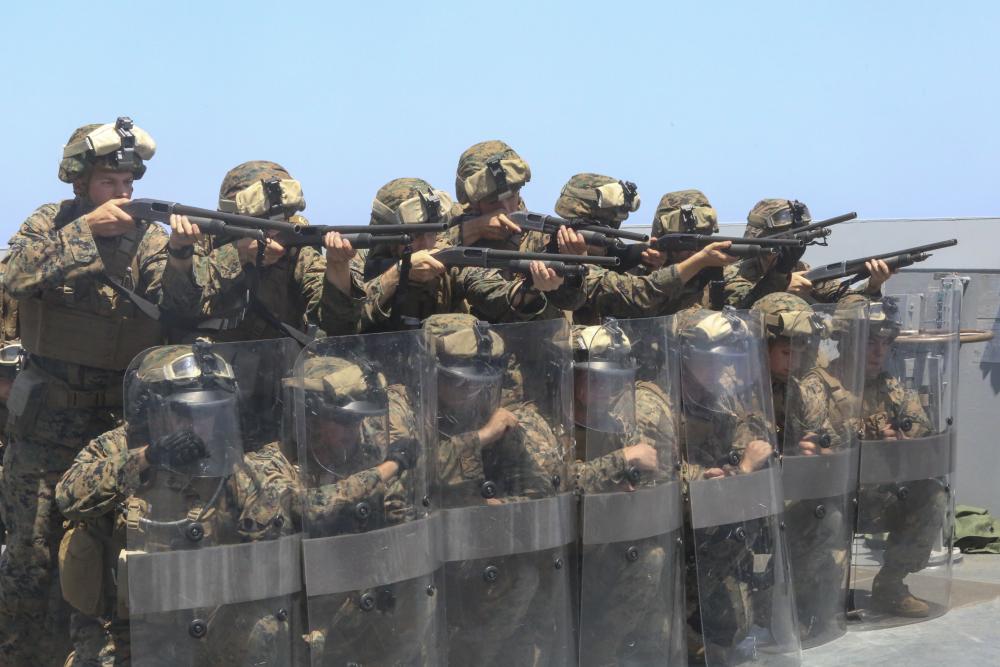
In the US Civil War, the VRC maintained law and order at garrison areas, while other provost guard units served on the front lines. In 1863, the Office of the Provost Marshal General was established and oversaw the Veteran Reserve Corps (VRC). The officer in charge is inspecting the arms of the Zouaves, who are about to dispatch on a provost-guard duty. The Provost Corps was disbanded in November 1783. The Marechaussee protected the Army's rear and flanks during troop movements, searched for stragglers, guarded river crossings, and engaged in combat when needed, as in the Battle of Springfield. The Marechaussee Corps would be formed exclusively as a police organization, and was organized and equipped as light dragoons, utilizing their speed to aid in troop movements and moving prisoners from the battlefield. Under the new organization, the Provost Marshal was responsible for soldiers under custody and for punishments, while the Marechaussee was tasked with the enforcement of order within the Continental Army. On, Congress established the Provost Corps, which General Washington referred to as the "Marechaussee." This name was from the French: " maréchaussée," from the Old French " mareschaucie," meaning "the marshalcy." Captain Bartholomew von Heer, a German-speaking officer from Pennsylvania, was appointed as the first commander of the Marechaussee on 1 June 1778. The Provost Marshals relied on soldiers temporarily drawn from other units, and had difficulty enforcing discipline. In January 1776, William Maroney was appointed as the first Provost Marshal of the Continental Army. General George Washington requested that the staff position of Provost Marshal be created to deal with disciplinary issues. The Military Police Corps traces its lineage and history back to the American Revolution. Military Police in the Revolutionary War It was officially established on 26 September 1941, although it has an irregular history dating back to 1776. The Military Police Corps is one of the youngest branches of the United States Army. Work includes maintaining physical security and supervision of facilities, but specialists are also responsible for offering counseling services to those within the facility. An Internment/Resettlement Specialist works in the confinement and correctional facilities of the United States Military. 31K - Military Police Working Dog HandlerĪ Criminal Investigations Warrant Officer investigates felony crimes and can be tasked to DoD operations in areas like counter-narcotics and HUMINT.31E (formerly coded as 95C) - Internment/Resettlement Specialist.31D (formerly coded as 95D) - Criminal Investigations Special Agent.31B (formerly coded as 95B) - Military Police.311A - Criminal Investigations Warrant Officer.The Military Police Corps has six career paths within the Army, one for commissioned officers, one for warrant officers, and four for enlisted soldiers:Ĭurrently 31 series, formerly the 95 series, and before that, 1677.

Police intelligence operations (integrated function across all disciplines).Security and mobility support operations.
The Military Police tasks can be separated into three disciplines and one integrated function: Military Police are actively utilized in direct combat and during peacetime. The Military Police Corps provides expertise in policing, detainment, and stability operations in order to enhance security and enable mobility.

GENGHORO TAGAME AMPUTEE MILITARY POLICE ENG FULL
The United States Army's Military Police provide an important function in the full spectrum of Army operations as a member of the Maneuver, Fires, and Effects division.


 0 kommentar(er)
0 kommentar(er)
